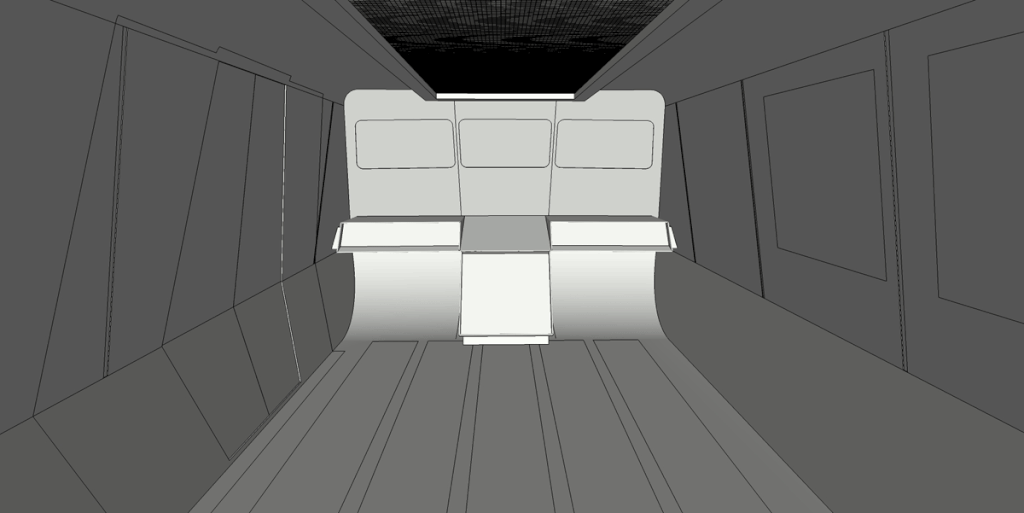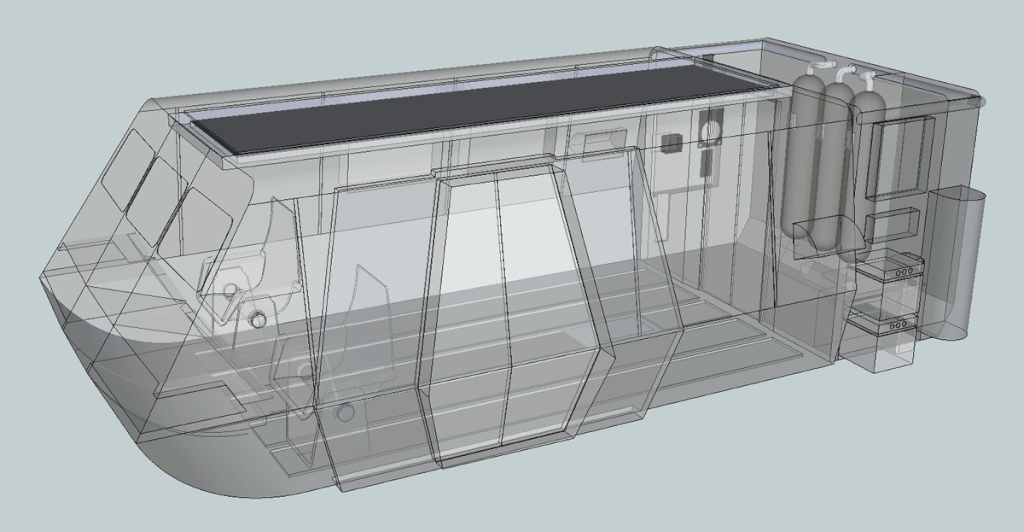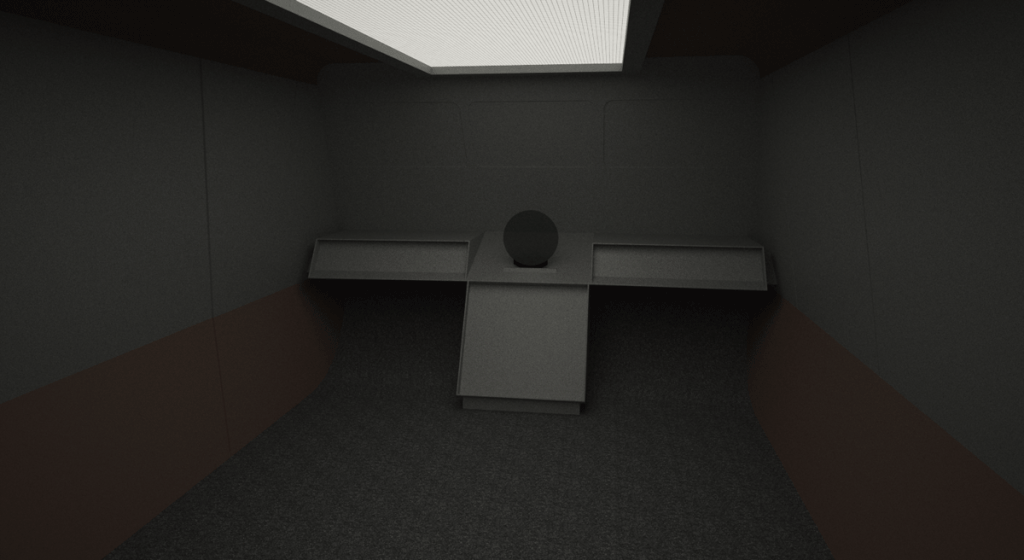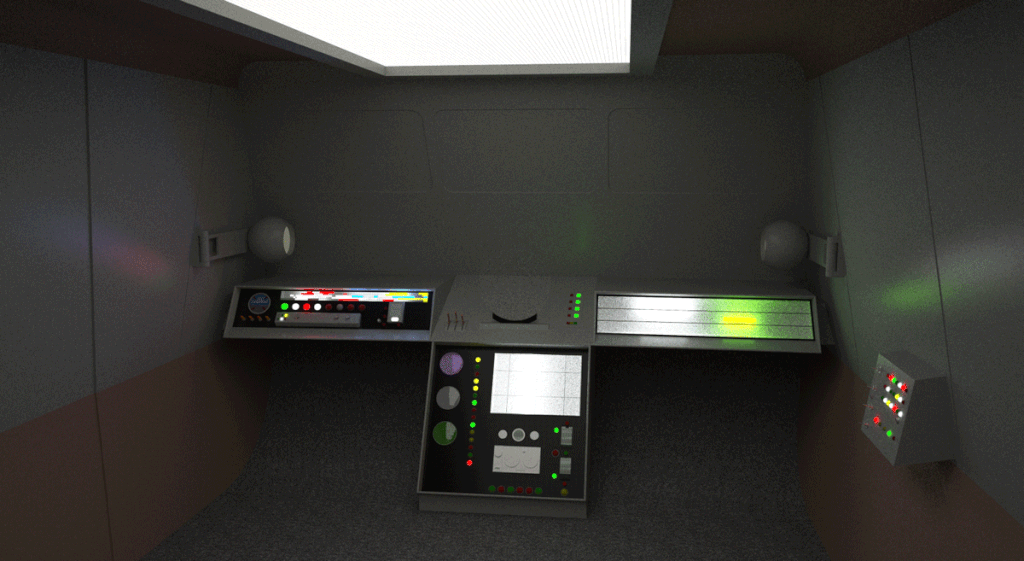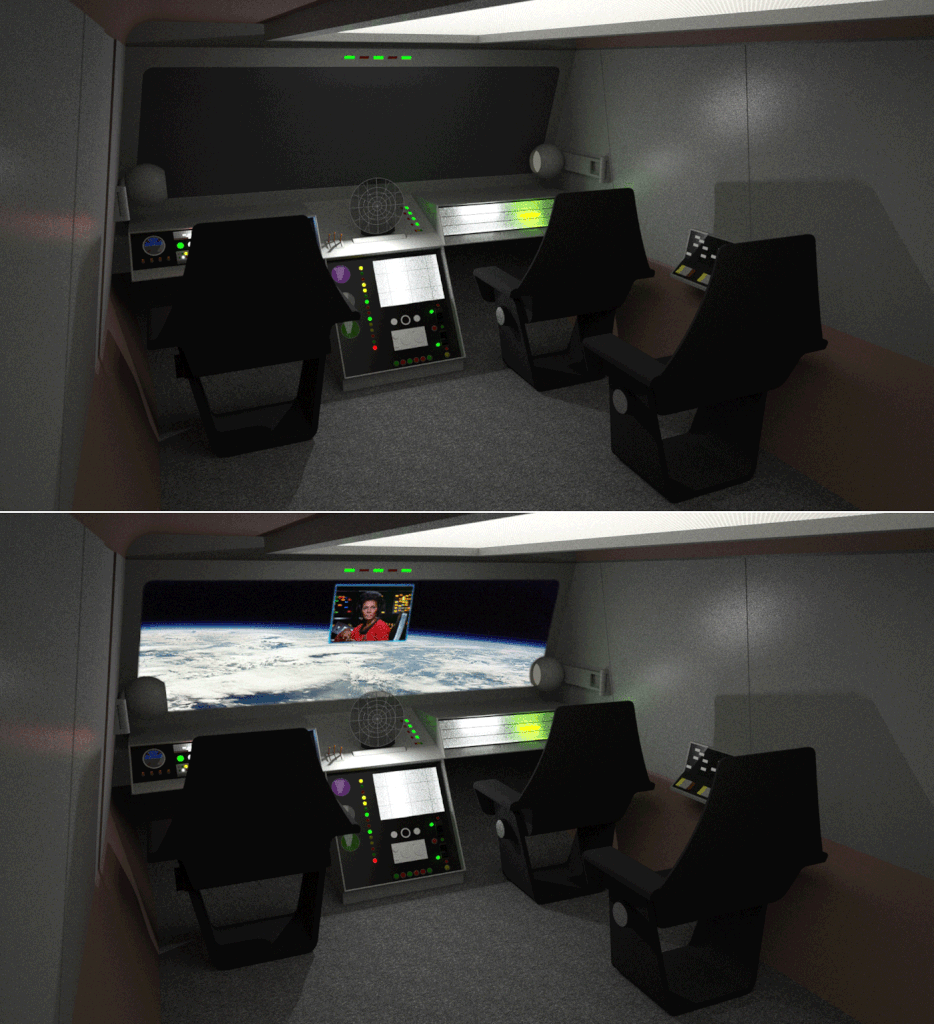Wow! Just, wow. I'm prepared to start modeling the forward console and while studying some screencaps I came to a surprising realization.
I had always thought, to this day, that the sloping forward bulkhead of the interior set was a simple flat panel all the way across from one side to the other. But on carefully scrutinizing a few screencaps I've realized that the forward bulkhead is not a simple and single flat panel, but rather three separate panels slightly angled to each other by about 2-3 degrees. This mimicks somewhat how the exterior forward hull was made. It also helps explain some of the shape of the forward console. It's such a subtle thing that it would be very easy to miss.
As such I have to remake the forward bulkhead of my interior that, fortunately, will not compromise anything else I've done and it will still fit easily into my exterior.
I had always thought, to this day, that the sloping forward bulkhead of the interior set was a simple flat panel all the way across from one side to the other. But on carefully scrutinizing a few screencaps I've realized that the forward bulkhead is not a simple and single flat panel, but rather three separate panels slightly angled to each other by about 2-3 degrees. This mimicks somewhat how the exterior forward hull was made. It also helps explain some of the shape of the forward console. It's such a subtle thing that it would be very easy to miss.
As such I have to remake the forward bulkhead of my interior that, fortunately, will not compromise anything else I've done and it will still fit easily into my exterior.

